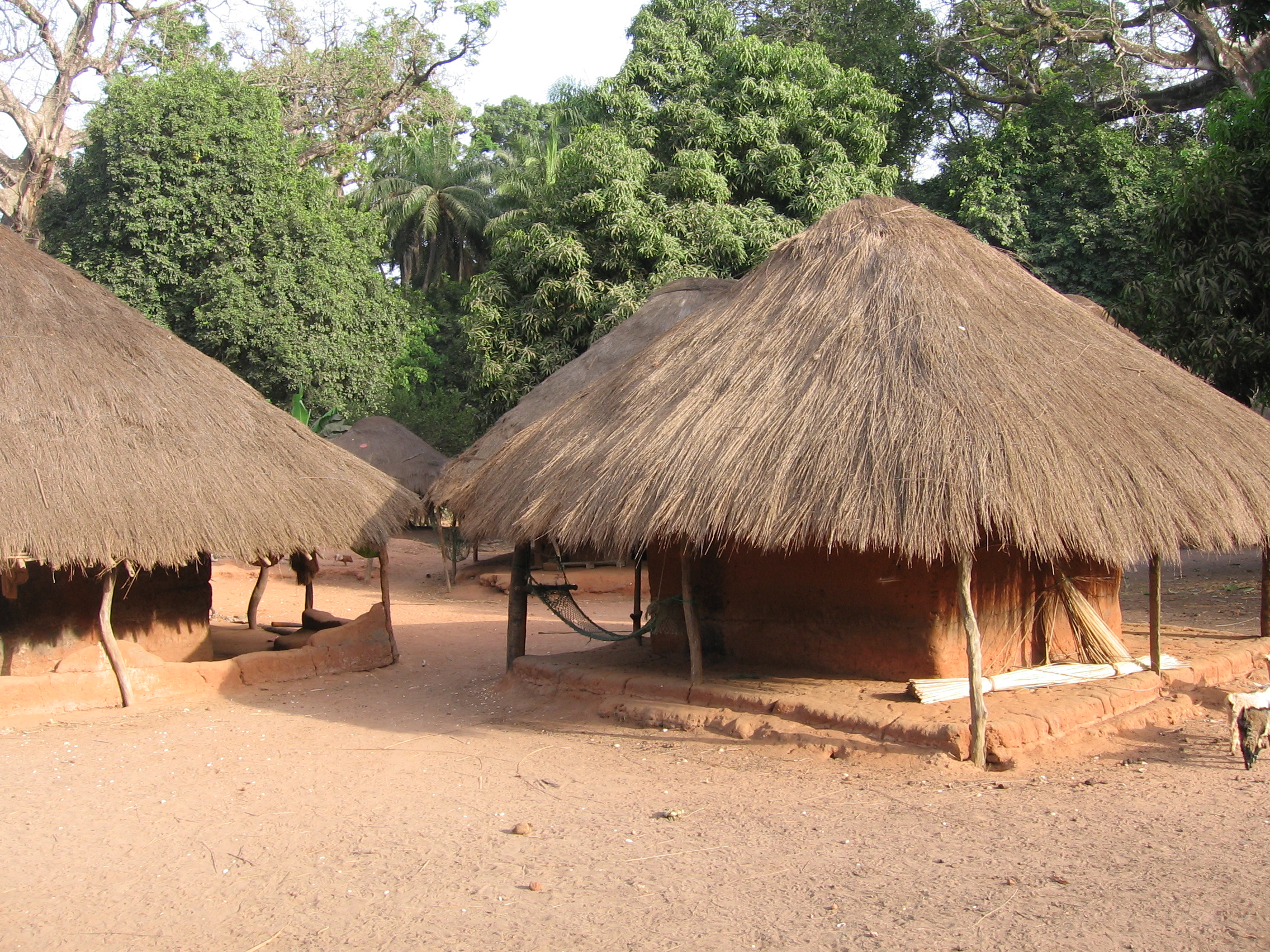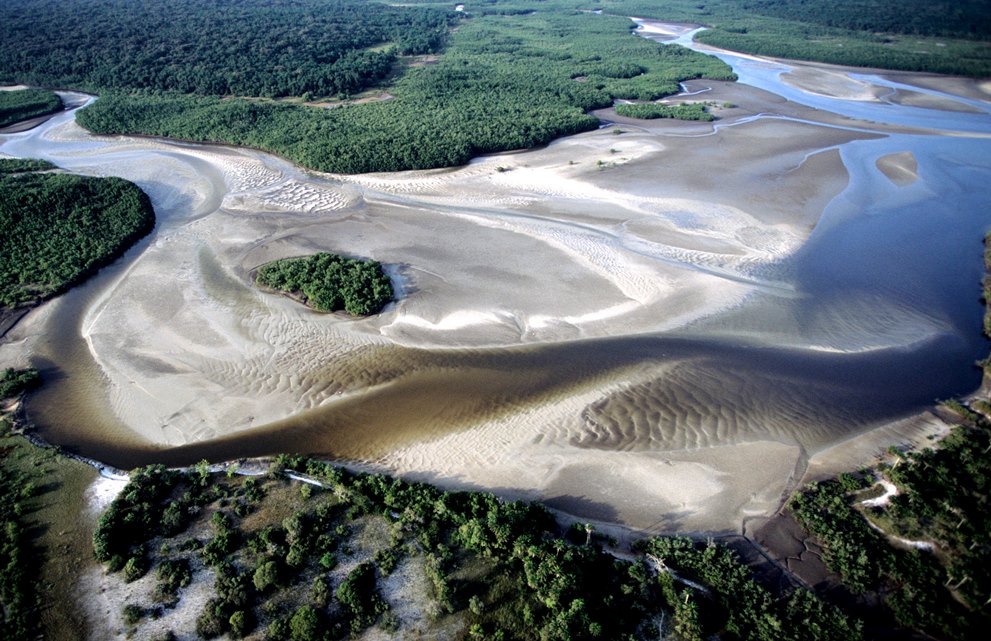|
Carache
Carache is an island in the northwestern part of the Bissagos Islands group, Guinea-Bissau. It belongs to the Bolama Region and the sector of Caravela Caravela is the northernmost island of the Bissagos Islands of Guinea-Bissau, part of the Sector of Caravela, which also includes the islands Carache, Maio, Ponta and Formosa. The population of the sector is 4,263, the population of the island is .... Its area is 80.4 km², the island is 18.7 km long and 7.3 km wide. It is separated from the island of Caravela by a narrow channel. The largest villages on the island are Binte and Ampintcha. Its population is 428 (2009 census).População por região, sector e localidades por sexo censo 2009 , Instituto Nacional de Estatística Guiné-Bissau References |
Caravela
Caravela is the northernmost island of the Bissagos Islands of Guinea-Bissau, part of the Sector of Caravela, which also includes the islands Carache, Maio, Ponta and Formosa. The population of the sector is 4,263, the population of the island is 907 (2009 census).População por região, sector e localidades por sexo censo 2009 , Instituto Nacional de Estatística Guiné-Bissau The area of the island is 128 km2, its length is 19.3 km and its width is 10 km. The island is heavily forested with . It has white, sandy beaches. Caravela has a small airfield. The island |
Bolama Region
Bolama is an administrative region in Guinea-Bissau, consisting primarily of the Bijagós Archipelago of the country's southern coast, together with a small coastal strip centred on the coastal town of São João. It has an area of 2,624 km2. Its capital is Bolama, on the island of the same name. It is a coastal region covered with Mangrove swamps, rain forest and tangled forest and receives an annual rainfall of more than . As of 2009, the total population of the region was 32,424, with the urban population being 9,118 and rural being 23,306. The sex ratio of the region is 97 females for every hundred males. As of 2009, the net activity rate was 48.88 per cent, proportion of employed labour force was 33.32 per cent, proportion of labour force was 75.77 and the proportion of potentially active population was 33.32 per cent. The absolute poverty rate, people earning less than $2 a day, in the region stood at 51.6 per cent, with a regional contribution of 20.6 per cent to the ... [...More Info...] [...Related Items...] OR: [Wikipedia] [Google] [Baidu] |
Atlantic Ocean
The Atlantic Ocean is the second-largest of the world's five oceans, with an area of about . It covers approximately 20% of Earth's surface and about 29% of its water surface area. It is known to separate the " Old World" of Africa, Europe and Asia from the "New World" of the Americas in the European perception of the World. The Atlantic Ocean occupies an elongated, S-shaped basin extending longitudinally between Europe and Africa to the east, and North and South America to the west. As one component of the interconnected World Ocean, it is connected in the north to the Arctic Ocean, to the Pacific Ocean in the southwest, the Indian Ocean in the southeast, and the Southern Ocean in the south (other definitions describe the Atlantic as extending southward to Antarctica). The Atlantic Ocean is divided in two parts, by the Equatorial Counter Current, with the North(ern) Atlantic Ocean and the South(ern) Atlantic Ocean split at about 8°N. Scientific explorations of the A ... [...More Info...] [...Related Items...] OR: [Wikipedia] [Google] [Baidu] |
Bijagós Archipelago
The Bissagos Islands, also spelled Bijagós ( pt, Arquipélago dos Bijagós), are a group of about 88 islands and islets located in the Atlantic Ocean off the coast of Guinea-Bissau. The archipelago was formed from the ancient delta of the Geba and Grande de Buba rivers and spans an area of . 20 of its islands are populated year-round, including the most populated island, Bubaque, where the administrative capital is situated. There is a high diversity of ecosystems: mangroves with intertidal zones, palm forests, dry and semi-dry forests, secondary and degraded forests, coastal savanna, sand banks and aquatic zones. The archipelago was declared a UNESCO Biosphere Reserve in 1996. Demographics The population is estimated at about 30,000 (2006) and the ethnic group Bissago ( pt, Bijagó) predominates. It has a relatively youthful population due to high birth rates and low life expectancy. Economy The economy is largely rural, with many families living from subsistence farming ... [...More Info...] [...Related Items...] OR: [Wikipedia] [Google] [Baidu] |
Bissagos Islands
The Bissagos Islands, also spelled Bijagós ( pt, Arquipélago dos Bijagós), are a group of about 88 islands and islets located in the Atlantic Ocean off the coast of Guinea-Bissau. The archipelago was formed from the ancient delta of the Geba and Grande de Buba rivers and spans an area of . 20 of its islands are populated year-round, including the most populated island, Bubaque, where the administrative capital is situated. There is a high diversity of ecosystems: mangroves with intertidal zones, palm forests, dry and semi-dry forests, secondary and degraded forests, coastal savanna, sand banks and aquatic zones. The archipelago was declared a UNESCO Biosphere Reserve in 1996. Demographics The population is estimated at about 30,000 (2006) and the ethnic group Bissago ( pt, Bijagó) predominates. It has a relatively youthful population due to high birth rates and low life expectancy. Economy The economy is largely rural, with many families living from subsistence farming a ... [...More Info...] [...Related Items...] OR: [Wikipedia] [Google] [Baidu] |
Guinea-Bissau
Guinea-Bissau ( ; pt, Guiné-Bissau; ff, italic=no, 𞤘𞤭𞤲𞤫 𞤄𞤭𞤧𞤢𞥄𞤱𞤮, Gine-Bisaawo, script=Adlm; Mandinka: ''Gine-Bisawo''), officially the Republic of Guinea-Bissau ( pt, República da Guiné-Bissau, links=no ), is a country in West Africa that covers with an estimated population of 1,726,000. It borders Senegal to the north and Guinea to the south-east. Guinea-Bissau was once part of the kingdom of Kaabu, as well as part of the Mali Empire. Parts of this kingdom persisted until the 18th century, while a few others were under some rule by the Portuguese Empire since the 16th century. In the 19th century, it was colonised as Portuguese Guinea. Portuguese control was restricted and weak until the early 20th century with the pacification campaigns, these campaigns solidified Portuguese sovereignty in the area. The final Portuguese victory over the remaining bastion of mainland resistance, the Papel ruled Kingdom of Bissau in 1915 by the Portu ... [...More Info...] [...Related Items...] OR: [Wikipedia] [Google] [Baidu] |




